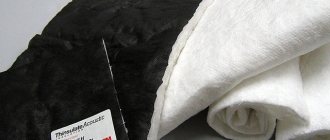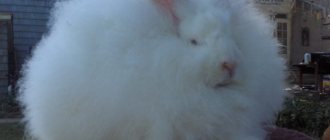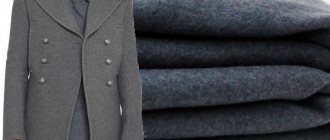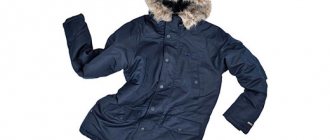We remove the prickliness of wool: how and what to wash it with, freeze the product, and dry it properly.
With the arrival of cold weather, woolen items are probably the most beloved in the wardrobe of all our compatriots. Indeed, a good woolen item is thin, light, and at the same time very warm. Only fleece items can compete with them, but due to the specific visual appearance, fleece is used for sewing sports lines, which is not suitable for everyone.
In this article we will tell you how to care for woolen items so that when worn they do not cause discomfort or tingling (a natural characteristic of wool, even merino).
What to do to prevent woolen items from itching
It is important to know that a thing “bites” because of its structure.
Like human hair, wool tends to split, forming small lint along the edges of the thread, which irritates the skin. Scientists claim that the “biting” thing is good for health, but not everyone is ready to put up with discomfort for medicinal purposes.
Therefore, many fashionistas and fashionistas who prefer warm clothes made of wool try by any means to soften the prickly purchase. There are several ways to make clothes softer.
The down scarf is itching: what to do, how to fix it?
A down scarf is a very delicate thing and requires proper care. Depending on the color, thickness and even type of wool yarn, you should wash and dry it in different ways. Read more about caring for woolen scarves, including the famous Orenburg scarf, in our article at the link.
The down scarf is itching: what to do, how to fix it?
Powder for woolen items
You can make wool clothes soft by using a special powder and fabric softener. The most common of them are Laska and Lenore. It is better to purchase the liquid version of the product, it works better on the fabric and does not leave streaks.
You can use special softeners for washing machines and for hand washing; you need to choose a method based on the recommendations on the tag. During hand washing, the fabric deteriorates less and the risk of distortion is reduced.
Conditioner and powder soften the fabric, fixing the lint that has come out tightly to the thread itself. The effect of the product is not long-lasting, but it tends to accumulate. With each wash the item will become a little softer.
Shampoo and hair conditioner
To make clothes softer, it is not necessary to purchase special products for woolen items. You can use shampoo or hair conditioner (preferably both), which we use to wash our hair. It is advisable that they be for dry and split ends, then the effect will be stronger. Shampoo for long-haired animals is also good for softening.
Shampoo and conditioner, or maybe 2 in 1, act like powder. They are able to soften the hair, making it a single whole, and thanks to the fragrances, your clothes will not only be more pleasant to the body, but will also smell delicious.
To soften wool items, wash them in cool water and shampoo. Squeeze a little and apply the balm evenly on both sides. Leave the item for 5 minutes, then rinse off the balm and send the clothes to dry.
To prevent a woolen item from changing shape and stretching, it must be dried only in a horizontal position.
Steaming wool
Another way to make wool “thorn” soft is to steam it. To do this you will need: an iron or steam generator, a cloth (the size of the item being processed or larger) and citric acid. Lemon tends to soften things, and steam only enhances the effect.
To prevent wool items from itching:
- Place the clothes on the ironing board.
- Set the iron to the “wool” setting, if there is one, or just to a high temperature, but not maximum.
- Prepare a lemon solution (1 pinch per 1 liter of water).
- Dip the cloth into the solution.
- Place the damp cloth on the woolen product.
Now everything is ready, you can start the steaming process. Gently, without pressing too hard, go over the entire fabric. If you press hard, the item may stretch out, so everything needs to be done gently and with light movements. Having finished on one side, wet the fabric again and begin working on the second side of the product. When using a steam generator, the process of preparing clothes and steaming them does not change.
Mustard powder
This method, which makes it possible to make things less prickly, was used by our grandmothers long before the invention of special powders. Mustard softens the fibers, and the material becomes noticeably softer and more pleasant to the touch.
Using mustard powder to soften wool is very simple. Add 2 tbsp. l. mustard into a bowl of warm water and place the woolen product there. Leave it in the solution for an hour, then rinse thoroughly. Drain the mustard solution and rinse the clothes thoroughly. Squeeze lightly and set aside to dry.
A solution of vinegar and table salt
Vinegar perfectly softens wool fabric, making it soft and pleasant to the body. To prepare a vinegar-based solution, you need to mix the main ingredient with salt in equal proportions. For 5 liters of cool water, 1 tsp is enough. vinegar and table salt. If there is no vinegar in the house, you can replace it with citric acid.
For better results, the product should not only be rinsed in the solution, but also left to soak for 30 minutes. Since vinegar has a strong smell, even though there is only a small amount of it, it will take quite a long time to rinse the item after “bathing.” After washing the fabric under running water and getting rid of the smell, the product can be hung to dry.
How to make a woolen sweater, jacket, dress soft and not scratchy?
Another option goes well with clothes. To do this you will need vinegar and regular salt without additives. So: add 5 tablespoons of salt to 5 liters of warm water and dissolve completely. Add 5 tablespoons of vinegar or citric acid solution (a teaspoon per liter of water) and dip the item after washing in regular powder. Leave for 2-3 hours and then rinse.
If it is not summer and the item is not allowed to dry in a well-ventilated area, the smell of vinegar will remain in the item until the next wash.
Glycerin will help remove the prickly fur.
In this case, there is another way:
- 1 liter of water;
- 1 teaspoon glycerin.
Soak for no more than 30 minutes, rinse thoroughly.
Glycerin is sold in pharmacies without a prescription, but if it’s not available since our grandmothers’ stockpiles, it’s easier to buy special supplies.
Exposure to cold temperatures
Perhaps the most original way to make wool not prickly, but soft, is to expose it to cold temperatures, in other words, to freeze it. With this method, the lint on the thread freezes and falls off, so the clothes become softer.
Since in city apartments you can’t hang things out the window, unless on an unglazed balcony, and winter is not eternal, a freezer is usually used for this method. In addition to the freezer, we will need a plastic bag.
Place the damp woolen item in a bag and place it in the freezer for a day. After taking out the product, let it defrost, then rinse it in cool water. It is better to rinse with the addition of fabric softeners presented here.
Unfortunately, all of the above methods are only suitable for slightly itchy wool. If the material itches a lot, then there is nothing you can do about it, all you have to do is endure it or wear something softer under the bottom of your woolen clothes. Therefore, if you want to purchase something made of wool, carefully look at the composition, the manufacturer, and don’t forget to touch it (it’s best to touch it to your face).
It is worth remembering that the prickliest wool is sheep's wool. As a rule, hand knitting is more rigid than industrial knitting. When purchasing, it is better to choose products not made from 100% wool, but with impurities.
Mechanical impact
Steaming is often used to soften wool fibers. It is carried out using a steam generator or a regular iron with a steaming option. In combination with citric acid, the effect will be double strength.
For steam treatment, the item is laid out on the ironing board, the iron is set to the mode for ironing wool. A clean cotton cloth or gauze is moistened with a lemon solution: 0.5 teaspoon of citric acid is dissolved in a liter of water. The woolen product is then steamed through the dampened fabric. Do not apply heavy pressure with the iron. Such actions may lead to stretching of the product.
In addition to steaming, it is quite common to use low temperatures for woolen fabric in order to reduce its causticity. Under the influence of cold, the protruding villi freeze and then fall off. This allows you to soften the item and make it not scratchy.
In winter, we simply need warm clothes
On frosty winter days, you can hang the product on the balcony, and at other times, the freezer compartment of the refrigerator will do. The item is placed in a plastic bag and sent to the freezer. After a day, the product must be defrosted naturally, rinsed in cool water using wool softeners and allowed to dry.
Recipe for getting rid of itchy fur
Greetings to all needlewomen!
I want to share with you a recipe for getting rid of the itchiness of woolen items! I love prickly socks, BUT only socks. Everything else - be kind to me, softer, gentler, and silkier! Has it ever happened to you that your favorite warm sweater, scarf and hat are sent into exile because they hurt! Are you afraid of purchasing new things made from natural wool because of the prickliness?
Let's see WHY: 1. wool is hair, and the tingling sensation is felt primarily because of the scales on the hair. Those. depends on the breed of the animal: certain breeds of sheep and camels have more scaly hairs!
2. The method of obtaining raw materials to obtain yarn is also important: shearing is cheaper and easier, but the fibers have sharp ends. And combing is a more expensive method, but the fiber is more delicate!
3. The type of raw material is also important: down, undercoat and long-fiber wool (like merino wool) are the most delicate and soft. Cashmere never itches at all!
Thus, the prickliness of the yarn appears both from the sharp ends of the sheared wool (and not combed), and from the characteristics of the wool itself of different breeds of sheep: the hair scales, split ends, and simply shorter and thicker hairs used for spinning are prickly.
Those. To reduce the prickliness, you need to soften the wool hairs in the yarn or make sure that the split ends and hard scales fall off!
I get a lot of orders for wool knitting, and often people ask what to do to reduce the scratchiness, or even ask me to do something
- Share
Using my favorite and very warm wool scarf as an example, I’ll show you what I do to stop itching. There are several recipes for a solution for soaking: 1) A solution of vinegar with water - 1 teaspoon per 10 liters of water for soaking for 20-30 minutes after washing, then rinse thoroughly and let dry 2) Mustard powder: stir 1-2 tablespoons of powder in a basin of hot water; wait until the water cools down and soak the product for a couple of hours, then rinse and dry 3) Glycerin: dissolve 1 teaspoon per liter of water, soak the product for 20-30 minutes, rinse thoroughly and dry
Sometimes it is enough to soak the product in an appropriate solution, rinse and dry the product. But I often have to take more drastic measures to really get rid of the barbs. Especially regarding children's things! In this case, immediately after soaking in the solution, I pack the product, lightly wrung out of water, into a sealed bag and put it in the freezer overnight or for a day. Then I take it out, wait for it to thaw on its own, rinse it thoroughly, and dry it flat. Some particularly prickly yarns require the wet freeze to be repeated several times. For example, my scarf took 2 uses - and now I can happily wear it not only over my coat!
Even loops and warm scarves to you! Your Alexandra
Why does a wool sweater prick?
Wool is a natural material most suitable for making warm clothing. But for those who are sensitive to tingling sensations, a jacket made from this yarn will cause a lot of discomfort.
Why does the sweater prickle? The reason is the length of the wool hair. Long and straight fibers produce straight and smooth fibers, while curly and short fibers produce rough and uneven fibers. Sheep and camel wool is especially prickly. The way the material was obtained also matters. Shearing is an expensive route, but it produces fibers that are manageable and equal in density than combing. The finer the hair, the less prickly the yarn.
When purchasing, ask how the wool was obtained - cut or combed. The suspiciously low price of wool indicates that they saved a lot on quality during production. If you want to buy clothes that you will wear for many years, don’t skimp, buy high-quality ones from a manufacturer that has proven itself on the market.
Reasons why woolen items are very scratchy
A slight tingling sensation is a natural characteristic of the coat.
The reasons for this unpleasant property are:
- wool fiber has loose ends, which cause an unpleasant tingling sensation;
- Method of obtaining wool: shearing or combing. Haircut, unlike combing, is a less labor-intensive method of obtaining, but the fibers are rough and have fluffy ends that cause tingling. When combing an animal, guard hairs do not get into the raw material, and the items turn out to be tender, soft, and pleasant to the body;
- cashmere, mohair, alpaca, camel wool, merino wool - they all have different thread densities and degrees of thorniness.
Items made from cashmere and merino never itch. Products made from dog and camel hair have a pronounced tingling effect.
Why is the sweater scratchy?
The fact that a sweater itches is natural: animal hair is the same as human hair. If the ends of the hair are split, then a kind of brush of hairs is formed in this place. In wool, irritation to the skin is ensured by precisely this structure of the pile. Any skin is sensitive to tingling, children especially suffer from this. That is why it is recommended from the very first days of life to use soft acrylic or wool from a special line adapted for such products for children's clothes .
How to prevent woolen items from itching?
Scientists claim that the tingling effect that some types of wool have has a beneficial effect on human health. It stimulates nerve endings and increases blood circulation. Many people do not agree to tolerate discomfort. For them, there are many methods with which you can get rid of the causticity of woolen products.
6 folk remedies
Both modern means and ancient recipes, tested by many years of experience, will help make clothes softer.
Special washing powders and gels
Many washing powders and gels, for example, “Laska”, “Lenor” perfectly soften the fabric and smooth out protruding hairs. The effect of their use does not last long, so it is necessary to use the products after each wash in accordance with the instructions on the package.
Conditioners and gels are more suitable for wool than powders. They perfectly soften fibers without damaging the structure of things.
Shampoo and hair conditioner
These cosmetics soften wool fibers well. After using them, things will stop pricking and will smell nice.
Is it possible to make a scratchy sweater soft?
October 16, 2019
As cold weather approaches, the desire to warm yourself grows exponentially. And we are happy to wrap ourselves in our favorite warm and cozy things from our autumn-winter wardrobe.
Personally, I prefer warm things made from natural materials, most of all I love wool products. But some woolen items, especially those hand-knitted or sewn from crocheted fabric, have one feature - their tanginess. And this is not a matter of increased skin sensitivity, because there are lucky people who tolerate it completely calmly and do not even notice this effect while wearing the product. First of all, it is a matter of the raw materials from which the material or yarn is made.
Whether a future wool product will be pricked directly depends on the method of obtaining the raw material.
✽ Combing changes the structure of the hair, stretches it, makes it curly. As a result, the thread turns out to be uneven, acquiring or maintaining a caustic effect even in the finished product.
✽ Haircut is a more expensive method, thanks to which hair is removed without damaging or deforming it; it remains straight, smooth and obedient. As a result, the manufacturer receives fibers that are perfectly even in density, which will later become non-spiking wool yarn or fabric.
In addition, the longer and thicker the hair, the more likely it is that such raw materials will definitely make a prickly sweater. And, conversely, the thinner and softer the hair, the less the caustic effect, or it will be completely absent.
If you want to get rid of the caustic effect in the finished product, the Internet will “gladly” offer you at least three of the most popular ways to fix this problem at home, they will even show you a video.
Using a solution of vinegar and table salt
It is possible that acetic acid can somehow tame the tartness, but where is the guarantee that it will not damage the structure of the yarn or fabric so much that after such an experiment you will simply have to throw the item away.
Using dry mustard
This is also a very dubious method. Since mustard powder can change the color of the product, and its micro-particles will get stuck between the wool fibers.
How to make a wool item soft the first time you use it - an express method?
To prevent a new jacket from pricking while being worn, before the first use it must be softened - washed in water with added shampoo, rinsed using a special softening gel, lightly squeezed, and placed in the freezer for two hours. Then remove, defrost and dry.
During the drying process, it is recommended to shake the product in order to fluff the wool.
After such procedures, the new sweater will become soft and will not cause itching or discomfort to its owner.
The main rules for maintaining the softness of the product
In order to avoid unpleasant sensations while wearing a sweater, it is recommended to follow the following simple rules that will help maintain the softness of the pile:
- When cleaning these products, it is advisable to always use conditioner designed for washing wool items;
- try to avoid washing at high temperatures and at high spin speeds of the washing machine;
- the dryer also contributes to the loss of softness and elasticity of the material , so it is recommended to use such a machine only in cases of extreme necessity;
- drying near radiators, near heating devices or direct sunlight can make the item hard and prickly;
- too frequent washing, especially by machine , negatively affects the condition of the material and its softness;
- Use soft water to wash this item;
- When purchasing a product made from thick and bulky yarn, it is advisable to try it on , making sure that the material will be pleasant to the body and will not cause itching or irritation.
Sheep wool, in turn, is the most “biting” material, which may not be too soft to the body.
How to soften a woolen item?
In order to make a wool sweater softer, you should use traditional methods or purchase special products. You can treat the item with steam or expose it to low temperatures (below 0°C). Skilled housewives can try to remake a sweater or other product by unraveling the yarn and, after steaming, mixing it with cotton or silk threads.
Exposure to cold
One of the simplest methods of getting rid of excessive prickly wool is freezing. In winter, the product can be hung on the balcony or outside and left for a day. In summer, spring and autumn you can use the freezer. To do this, the item must be placed in a plastic bag, carefully folded, and placed in the freezer for 24 hours. After this procedure, the protruding hairs will break off, and the sweater will not prick so much. After defrosting, the item must be rinsed in cool water.
Steam treatment
When exposed to steam, wool softens, so it makes sense to get a steam generator or an iron with a steam function. Water is poured into the steam generator, it is connected to the power supply and the product is processed for 2-3 minutes. When using an iron, you should avoid direct contact of its sole with the surface of the woolen item. It is necessary to iron the product through a damp cloth or gauze. To enhance the effect, the fabric is moistened in a lemon solution (1/4 teaspoon of citric acid per 0.5 liter of water). Lemon will additionally soften the fabric and eliminate prickliness.
Special detergents for washing woolen products
Woolen items should be washed by hand. To do this, pour water at a temperature of 30–36°C into a basin, dissolve a small amount of gel and place a woolen item there. Water should completely cover the product. It should be left in the basin for an hour. After the allotted time, it is necessary to wash off any existing dirt and rinse the sweater until the detergent is completely washed out. The item should be dried in a horizontal position, laying it on a terry towel, which must be changed periodically.
Hair care products
The structure of wool is similar to that of human hair, so hair care products can be used to treat such products. It is best to purchase shampoo and conditioner for split ends, dry hair, then the effect will be more noticeable.
For washing, use shampoo, which is dissolved in cool water. Place a woolen product in water, leave for a few minutes, after which the dirt is carefully washed off. After this, the item is rinsed until the water becomes clear. Then the sweater is lightly wrung out and balm is applied to its surface and left for 5 minutes. Finally, the product is rinsed well and dried in a horizontal position away from heating devices and ultraviolet rays.
Folk ways to soften wool
The oldest method of softening wool, which our great-grandmothers used, is the use of mustard powder. It was used when chemicals had not yet been invented. Take 2 tbsp into a basin of warm water. l. mustard powder, stir well and dip the woolen product into the solution. Leave for an hour. After this, the item must be washed and rinsed. It must be said that mustard powder has a yellow tint, so this method is not suitable for washing white clothes. Alternative means are:
- Saline solution with vinegar. For 10 liters of water take 2 tsp. table vinegar and table salt, stir. The product can simply be rinsed in water and left for half an hour to enhance the effect. After such a procedure, a vinegar smell may remain, which can be eliminated with soda or ammonia. If there is no specific smell, you can immediately lay the product on a terry cloth to dry.
- Glycerol. A more gentle method that does not leave an unpleasant odor. To soften the wool, the product is dipped into a basin with a glycerin solution (5 liters of water, 5 teaspoons of glycerin) and left for an hour. Then rinse and dry in a horizontal position.
- Soda with ammonia. A combination of ammonia and baking soda can soften the prickly tissue. To make a solution, take 0.5 tsp per 5 liters of water. soda and 3 drops of ammonia, mix. The item must be placed in liquid for 40 minutes, then rinsed and dried.
What should I do to prevent the sweater from itching and become soft? Top 10 methods
Mustard
How to remove itchiness from a sweater at home? Since ancient times, mustard powder has been used for this purpose. Hot water is poured into a basin, then 2 tablespoons of mustard powder are dissolved in it. When the water has cooled to 40 degrees, the “biting” product is lowered into it. After two hours, the item is thoroughly rinsed and dried on a towel in a horizontal position. But keep in mind that this is a way to soften a scratchy dark sweater! It is absolutely not suitable for white and light-colored items, as mustard can stain them. It is important!
Vinegar with salt
But what to do if a sweater made of white or light-colored yarn is itchy? After washing, soak a wool sweater for 30 minutes in a solution prepared as follows: add one teaspoon of table salt and vinegar to 10 liters of water. Then rinse the item thoroughly. Dry horizontally on a towel (this is how you should always dry woolen items).
Baking soda and ammonia
This simple and cheap method will also help to make a sweater non-prickly: dissolve 1 teaspoon of soda and 5 drops of ammonia in 10 liters of water. Leave the item in the resulting solution for 30-40 minutes, depending on the size. For example, it is better to keep a woolen dress longer. After rinsing in cool water, dry as usual.
Lemon and citric acid
How to soften a scratchy sweater by steaming? Place the “thorn” on the ironing board and make a lemon solution. You can prepare it in two ways: Option 1 - mix the juice of 3-4 lemons in a liter of water. Option 2 - take 1 pinch of citric acid and mix it in a liter of water. Dip gauze or thin cotton fabric into the solution, distribute it over the surface of the clothing, without pressing too hard on the iron, and steam from all sides.
Glycerol
We buy glycerin at the pharmacy. It is quite affordable and is sold in every pharmacy. For 1 liter of water use 1 teaspoon of product. Soak the wool sweater for 30 minutes. Take out and rinse in clean water several times.
Hair conditioner
Hair conditioner will help prevent the hair from biting, because the structure of human hair is similar to animal fur. Add 2 tablespoons of conditioner to a bowl of warm water per 1 liter of water. Soak the product for 20 minutes, then rinse. This recipe will not only help make a scratchy sweater soft, but also get rid of pilling. By the way, many housewives like this method.
Dish detergent
Let us immediately stipulate that it is advisable not to use this method for delicate things, such as a down scarf. The detergent may contain substances that negatively affect the structure of the pile. But some brave housewives wet the sweater with water and then apply dishwashing detergent for several hours. After which, rinse and dry.
Washing with special products for wool
How to wash a sweater without itching? Few people now like to use the methods of grandmothers. Moreover, there are modern and quite effective ways to eliminate the problem of tartness in clothes. You can use laundry detergents such as Neutrale wool conditioner (costs about 150 rubles) or Lenor fabric conditioner (costs about 250 rubles). You'll have to shell out a little, but it's worth it.
Steamer
You can get rid of the harshness of clothes using hot steam. Spread the item on a flat surface, cover it with clean gauze or thin cotton cloth, after moistening it with water. Actively using the steam function, gently iron the product. If you use an iron, do not press on the soleplate to avoid deformation of the fabric.
Using a freezer
A scratchy sweater can be softened in the freezer. It is known that in the summer the fur of animals is prickly, and in the winter it is silky. This natural feature suggested to savvy housewives a way to eliminate discomfort when the sweater pricked. After pre-wetting, they place the clothes in a bag and then seal them in the freezer for a day. After this extreme procedure, the item is heated in warm water and dried. Many, however, are skeptical about this method. There are reviews that this way the barb does not go away. Decide for yourself whether to use it or not.
Is all the wool itchy?
Products made from 100% wool usually have strong scratchiness. This is usually camel or sheep wool. Hand-knitted items are often endowed with this unpleasant property compared to industrially produced products. When choosing a wool sweater, you should feel it thoroughly and make sure there are no protruding hairs. The softest products are those made from mohair, cashmere, angora, and alpaca. The impurities also make wool items more comfortable to wear.
Why do things prick?
The sweater is made from animal hair fibers, which is why people feel a tingling sensation on their skin when they wear it. Various types of fiber are used in the manufacture of models.
Advantages of using wool in the production of products:
- the model does not wrinkle and retains its shape;
- natural fiber repels dirt;
- absorption of unpleasant odors and moisture is minimal;
- reliably protects from the wind;
- keeps warm.
The only drawback is the thorniness of the fiber.
There are parameters by which you can determine how much the wool fibers will prick:
- Pile length. The smoother and longer they are, the smoother and straighter the resulting fiber will be.
- Thinness of hair. If the pile is thin, then the yarn will be pleasant and delicate.
- Method of obtaining raw materials. When shearing an animal, a less thorny thread is formed. If the method of combing the undercoat is used, the resulting fiber is curly and more uncomfortable.
- Manufacturer of the model. If the manufacturer is decent, then high-quality, uniform pile is used in the work. Otherwise, during the production of the product, smooth and hard raw materials are twisted, which results in a more prickly sweater.
It is important to remember that the feeling of tingling hair fibers after purchasing a new product is inevitable. However, this problem can be avoided by using small tricks when washing woolen items.











